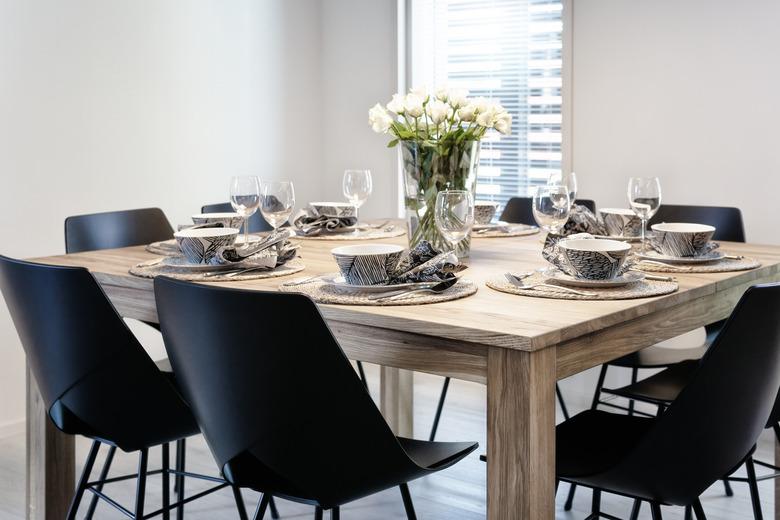Marble Vs. Wood Dining Room Table: Which Should I Choose?
We may receive a commission on purchases made from links.
It may not seem like it at first glance, but marble and wood dining tables have much in common. Both marble and wood tables are natural materials with classic, timeless looks that work with just about any décor style. These materials are notably sturdy, heavy, and expensive, and both require care and protection to prevent scratches and stains. Ultimately, the best way to decide which type of table is right for your home is to learn about the differences between the two.
Marble Dining Table
Pros:
- Unrivaled luxury.
- Dramatic appearance sure to wow guests.
- Works well with most decor styles.
- Can support a lot of weight.
Cons:
- One of the most expensive dining table options.
- Prone to chips, cracks, scratches, and staining.
- Needs to be resealed and polished twice a year.
- Difficult and sometimes impossible to repair.
Wood Dining Table
Pros:
- Less expensive than marble.
- Can be refinished as needed.
- Timeless appearance that works in all homes.
- Good strength-to-weight ratio.
Cons:
- Pricier than most materials other than marble.
- Not as strong as marble.
- Prone to scratches, dents, and stains.
How Much Do They Cost?
How Much Do They Cost?
Prices for marble tables start at around $650 for small pieces, but most cost $1,000 to $4,000. Wood tables are typically a bit cheaper. Smaller solid wood tables can be found for as little as $120, with an average cost between $1,000 and $2,000. Ordering custom or designer wood or marble tables will increase the price dramatically, usually by at least $1,000.
Other Materials in the Table
Other Materials in the Table
Most wood tables have a base and tabletop made of wood, but you can also find wood tables with metal legs or glass-topped tables with wood legs. On the other hand, marble tables may occasionally have marble bases below the stone tabletop, but they are usually made with wood or metal supports. It is also possible to find tables with glass tops and marble legs, but these are less common.
What About the Weight?
What About the Weight?
Marble is inherently much heavier than wood. A cubic foot of marble weighs around 160 pounds, whereas even heavier woods, like maple, weigh under 50 pounds per cubic foot. When comparing two round tables about 40 inches wide, the marble one weighs 130 pounds, whereas the wood table weighs only 40 pounds. The difference in weight between larger tables is even more dramatic.
If you move your table around regularly, a wooden table is probably a better choice, particularly because marble chips and cracks easily when bumped or dropped against hard surfaces.
Cleaning and Maintenance
Cleaning and Maintenance
Marble is a soft stone that needs a lot of care and protection to prevent chips, scratches, cracks, or stains. Acidic substances, including coffee, orange juice, and wine, can erode the stone, and the surface should be cleaned only with a specialty marble cleaning product. Cover the table with a tablecloth whenever you are serving foods likely to leave stains, and always place drinks on coasters. The surface should be resealed and polished at least twice a year.
Wood can also get scratched and stained, but it is much more resistant to cracking or chipping due to impact. Wet spots should be dried as soon as possible to prevent damage to the finish, and coasters are advisable. To prevent damaging the finish, clean these tables only with a product designed for use on wood. All wood can be damaged by moisture, and it is more vulnerable if it has an oil or other penetrating finish rather than a surface finish like lacquer or polyurethane.
Repairing Damage to the Table
Repairing Damage to the Table
Marble that has been chipped, cracked, scratched, or stained can be difficult or even impossible to repair. Though you can make some repairs to a marble table, many require the expertise of a professional, meaning they will be pricey. On the other hand, it's simple to repair wood damage by sanding and refinishing the surface.
